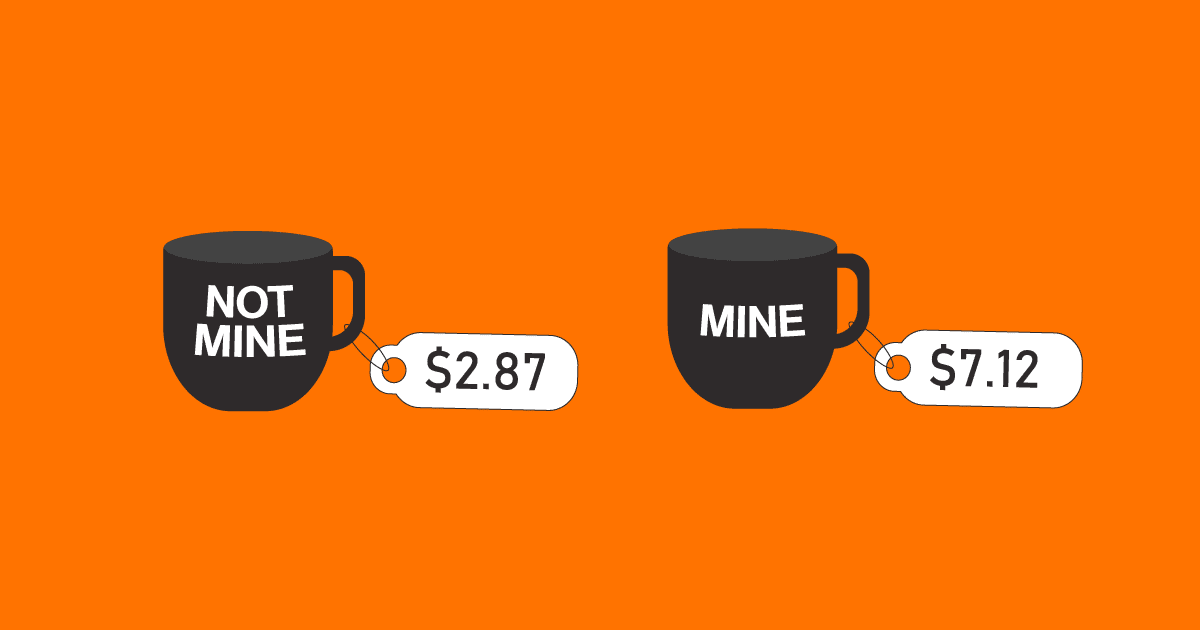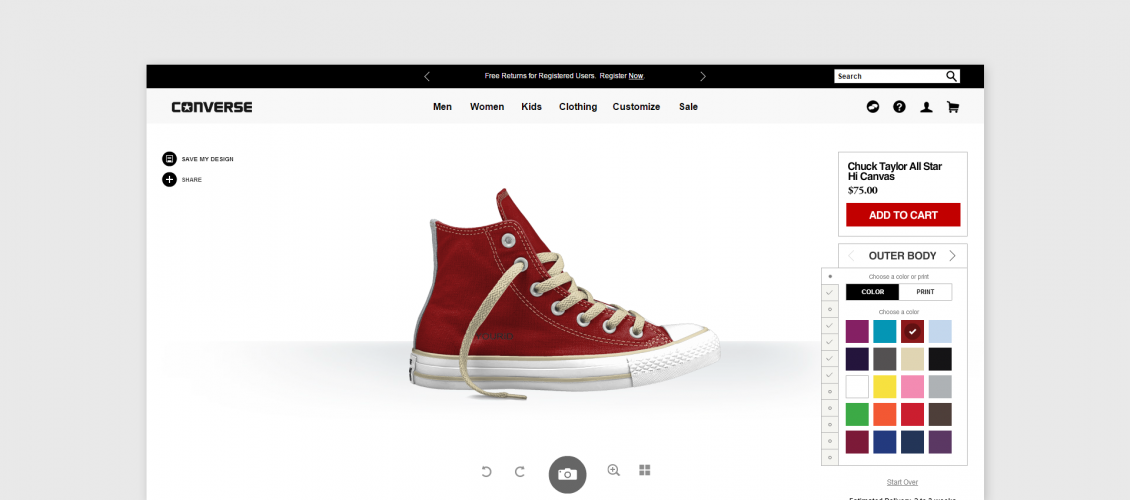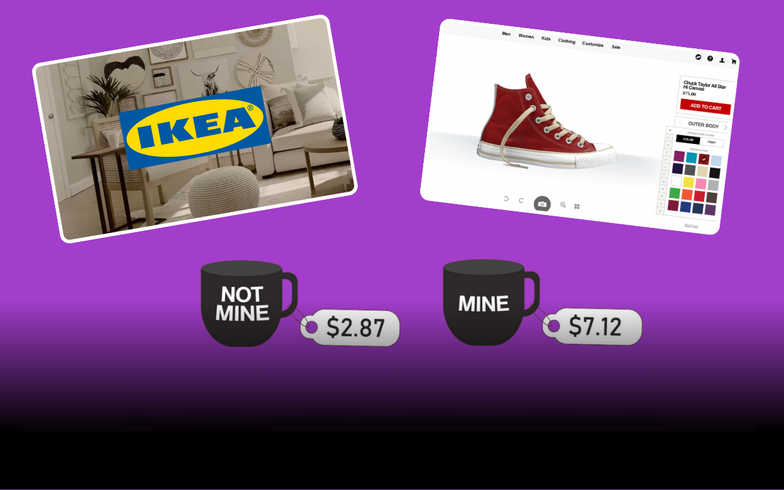Trying Spotify for free for 1 month makes you feel uncomfortable when not renewing, or experiencing the products in IKEA’s house model makes you want to buy it more than a regular store,…. We have accidentally fallen into a special psychological trap – Endowment Effect without knowing it!
What is Endowment Effect?
In behavioral economics and psychology, Endowment Effect or Endowment Effect is defined as a psychological phenomenon that causes people to unconsciously assign higher value to things they own compared to things they do not have, thereby promoting the desire to own that product even more. The consequence of the Endowment Effect is that when you have been exposed to or used a product for a long time, you will tend to want to continue to possess it more.

This psychological phenomenon has been proven through many studies, including the research of Daniel Kahneman, Jack Knetsch and Richard Thaler. These three psychologists gave the participants a cup and asked them how much money they were willing to pay for the cup. Participants then took possession of the cups and they were allowed to sell or trade them for equally priced pens. And the results showed that the owners set a selling price that was double what they were willing to pay for those cups! Unconsciously, they have assigned a higher value to the cup they own than the cup they have to buy even though they are exactly the same!
The cause of the Endowment Effect is very simple: Emotion and Fear of Loss…
Firstly, People always have a special affection for the things they own the feeling of ownership makes us happier, more cheerful and love that item more. On the other hand, things we own have been with us through many moments in life, creating so many beautiful memories that we cannot bear to lose them.
Second, we always focus more on the loss instead of what you receive. Neuropsychological studies have proven that once we possess something, the fear of losing it becomes even greater. This fear of loss causes people to unconsciously add unrealistic values to the objects they own: They feel it is more useful, better, more valuable because it has many valuable memories. ,… From there, the Endowment Effect is formed and motivates people to want to continue possessing that object more.
In addition, there is another psychological phenomenon that also contributes to the Endowment Effect, which is Status-Quo. This psychology has also been specifically analyzed in a previous article by Marketing AI:
A very visible example of the Endowment Effect is when you are given a Spotify Premium account for a month with a music space dedicated to yourself and no longer worrying about Advertising. You begin to feel a sense of ownership and control over music listening when using Spotify Premium and begin to fall into the Brand‘s Endowment Effect trap. After owning it for 1 month, your desire to continue owning it becomes stronger and stronger, it becomes very difficult to return to the regular, ad-filled Spotify package even though you have always used it before. And from here you have decided to spend money to buy Spotify Premium.
Therefore, Endowment Effect is a familiar psychological trap that many brands still silently use every day to motivate customers to quickly buy and use their products.
Learn how to apply Endowment Effect from big brands
The psychological trap behind IKEA’s “houses” in the middle of stores
IKEA, a famous furniture brand, is one of the masters of Endowment Effect. From the moment they enter an IKEA store, customers are encouraged to experience the products. It is worth mentioning that the experiential space that IKEA brings is like a real home. Each product experience space is designed like a house with standard dimensions, reflecting the average living standard of people in a specific area and recreating the typical scenery of that locality. It’s even specific to every small detail like the view from the balcony or window.
Here, customers can lie down on comfortable beds and use products as if they were in their own home. The products are cleverly arranged, creating a complete living space filled with IKEA. All these small but calculated details distract customers’ minds, they feel close and familiar like their own home and the products feel like they belong to them. And from there, Endowment Effect was formed, urging them to buy all those products for their home.
Warby Parker allows customers to take the entire frame home to try on
Famous eyeglasses brand in the US Warby Parker is even bigger than IKEA by allowing customers to take home trial products with the Home Try-On program. Customers can order up to 5 frames to try on at home for 5 days, then are allowed to return the frames they don’t like and only need to pay for the frames they want to keep.
Customers take the glasses home, try them on with their daily outfits, they begin to form the Endowment Effect, feeling like they actually own Warby Parker glasses. Gradually, returning these glasses became very difficult for customers, motivating them to spend money to keep the products, or even keep all 5 products.
Converse makes it impossible for customers to leave their self-designed shoes
Converse has a quite special feature on the website: Custom Shoes – Allows buyers to design their own shoes. Here, you will shape the colors, textures, and design patterns on your Converse shoes, creating your own unique design, not duplicated by anyone else. It is similar to being personally involved in the production process of that shoe.
When you make something yourself, you will feel like you own and own that object. The same goes for these Converse Custom shoes. They make you unwilling to throw away a product you helped create, a design just for yourself. And from there, the desire to buy is motivated more strongly.

Endowment Effect stimulating formulas that every marketer can apply
From the above examples, it can be seen that trial programs, product personalization, etc. of brands do not simply enhance product experience for consumers. It is also a psychological trap, effectively stimulating the Endowment Effect, promoting consumers’ purchasing decisions.
However, not every trial activity can create an Endowment Effect. According to the above theory, the psychological ownership effect comes from both emotional factors and fear of loss. Thus, for customers to feel like they truly “own” a trial product, you need to influence three main factors such as:
- Feeling: Bring test products into moments and spaces, attaching them to familiar images in consumers’ daily lives. Let them feel like they are experiencing a real-life product. Or make the product a part of their “experience”, allowing them to participate in the product formation and production process.
- Time: Make sure the trial period of the product is long enough for them to mistakenly think they already own the product.
- Stimulates the pain of loss: Attack customers’ psychology with messages that show the opportunity costs they will miss by not using the product. For example, “You can save up to 30%!’ But they didn’t.”
Below are some suggestions on how to exploit the psychological Endowment Effect that you can refer to:
#1. Create the most vivid, realistic experience about the product
Just trying the product is not enough to make customers form the Endowment Effect mentality. That trial experience must be designed to be as vivid and realistic as possible, making customers feel like they are using it in everyday life.
You can bring customers into a unique experience home like IKEA, or even send products to customers’ homes like the glass brand above. Or use AR technologies to bring them to use the product in a virtual world.
#2. Stimulate their imagination with specific numbers and images
Stimulate their imagination by using specific numbers, images, sounds, etc. This method is somewhat simpler, you just need to cleverly integrate attractive information inside a media message. However, to create the Endowment Effect, those figures must be very specific, associated with a real situation so that the reader can imagine it immediately:
For example, Airbnb’s message to hosts follows:
Airbnb doesn’t say “Rent out your house for extra income.”
Airbnb convinced them that “Use your space for 4 guests in San Francisco, CA, USA and earn up to $2,929 a month” – The message is much more attractive thanks to the attractive amount of money
Airbnb can also create a different message, tapping into loss “If you leave your house empty, you will lose the opportunity to own $2,929”

#3. Allow them to participate in the product creation process
Make consumers feel responsible for the product by letting them directly participate in the process of creating a product. Some specific suggestions for this approach include:
- Build Custom product programs like Converse
- Organize contests and votes on product designs for customers to participate and personally “choose” the products they want.
#4. Don’t say customers “will” receive a promotion, confirm that the promotion “already” belongs to them
Normally, we often put promotional messages in the form of “You will receive XX% discount when purchasing the product”, “XX discount opportunity…”. Try changing this simple way of writing promotional content by putting a discount code in the hands of customers, claiming the discount code is theirs.
Simple examples like:
“You will receive a discount code when purchasing product A”
“Discount code up to XX VND is in your shopping cart. Click buy now to enjoy surprisingly low prices”
Summarize:
Endowment Effect is a quite interesting psychological effect and can easily be applied from small media messages to large-scale customer experience campaigns. In addition to the main effect of motivating customers to buy products, Endowment Effect also helps increase their loyalty to the brand. However, to create this effect, the brand requires detailed research on the life characteristics and behavior of consumers.
Comment Policy: We truly value your comments and appreciate the time you take to share your thoughts and feedback with us.
Note: Comments that are identified as spam or purely promotional will be removed.
To enhance your commenting experience, consider creating a Gravatar account. By adding an avatar and using the same e-mail here, your comments will feature a unique and recognizable avatar, making it easier for other members to identify you.
Please use a valid e-mail address so you can receive notifications when your comments receive replies.
